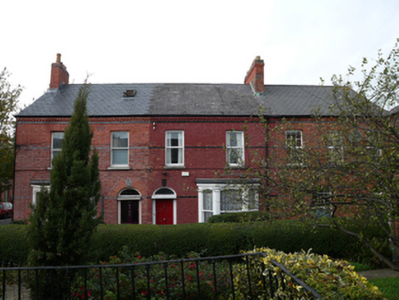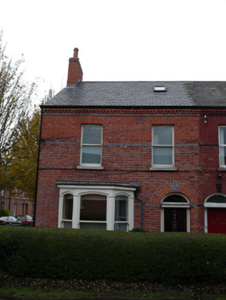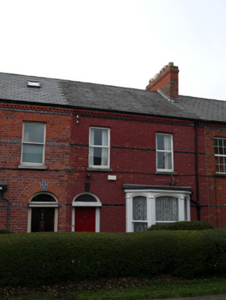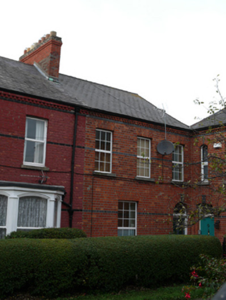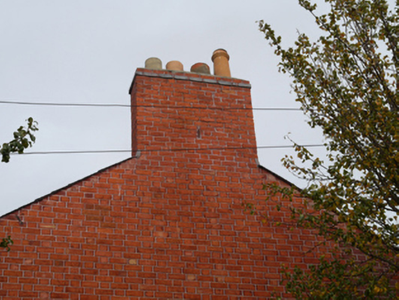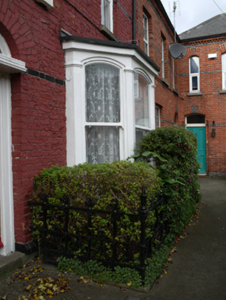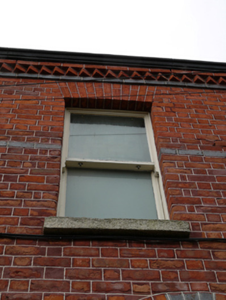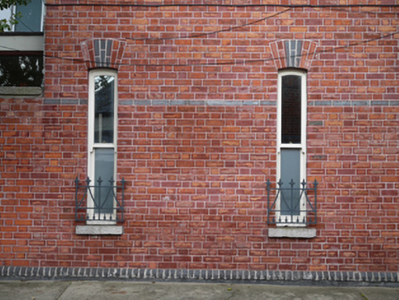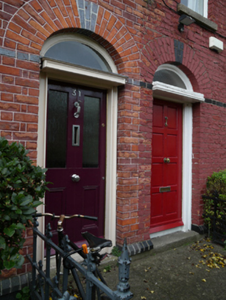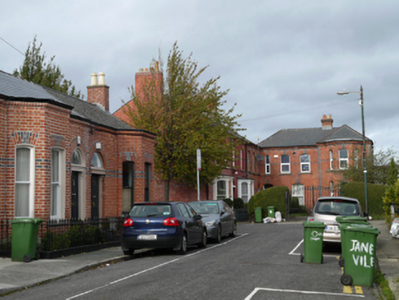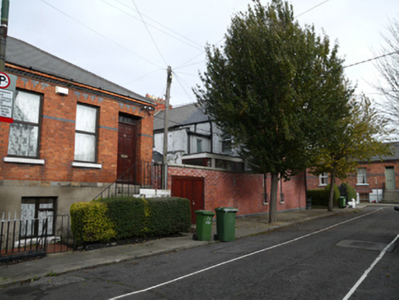Survey Data
Reg No
50080892
Original Use
House
In Use As
House
Date
1870 - 1890
Coordinates
315095, 232963
Date Recorded
22/10/2013
Date Updated
--/--/--
Description
Terrace of three two-bay two-storey houses, built c.1880, having flat-roofed canted bay window to front (east) elevation of no.31 and no.32. Pitched artificial slate roofs, with red and yellow brick chimneystacks, and red brick sawtooth eaves course. Red brick walls laid in Flemish bond having black brick courses and chamfered black brick plinth course. Rendered walls to rear elevation. Square-headed window openings having cut granite sills to front elevation. Segmental-headed window openings with black brick voussoirs and cut granite sills to south gable. Segmental-headed window openings with moulded render mullions to bay windows. One-over-one timber sash windows, some replacement uPVC windows. Round-headed door openings having black brick keystones, timber panelled doors, plain fanlights and cut granite entrance steps. Front gardens enclosed by painted metal railings.
Appraisal
This terrace retains much of its early form and character, and fabric including timber sash windows, timber doorcases and cast-iron railings. The ground floor bay windows add interest to the terrace and the black brickwork adds decorative interest. The construction of new residential streets in this area coincided with the immigration of Jewish communities fleeing pogroms in Europe in the late nineteenth century, and the area became known as Little Jerusalem. Thom's Directory of 1900 notes many Jewish surnames among the householders of Saint Kevin's Parade, and the Jewish Encyclopedia of 1906 notes a 'hebrah' or minor synagogue on the street. James Joyce's Ulysses refers to fictionalised characters living in this street, including Moses Herzog the one-eyed pedlar.

